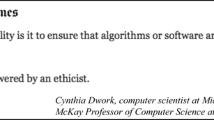Abstract
Advisory Committees to the Food and Drug Administration provide FDA with expert advice on medical and scientific topics relevant to FDA’s responsibility to protect and promote the public health. The history and experience with Advisory Committees (since authorization in federal law in 1972) provides a rich background to inform a review of best practices. The following best practices for the Advisory Committee process are noteworthy:
-
Role definition: A shared understanding of the roles of all participants in the Advisory Committee process helps to foster productive meetings and facilitates prompt resolution of potentially contentious issues.
-
Transparency: FDA and sponsor should operate with transparency in bidirectional sharing of information and perspectives before, during, and after a product-specific Advisory Committee meeting.
-
Regulatory knowledge: Advisory Committee members, special government employees, consultants, and sponsors must all have a fundamental knowledge of the regulatory principles governing the Advisory Committee process, as well as development and registration of drug and biologic products.
-
Access and focus: FDA has an ongoing need for access to external medical and scientific experts to augment the agency’s internal experts. Consultation with Advisory Committees should be focused on situations (as described in this article) where external advice is warranted to aid FDA in efforts to protect and promote the public health.
-
Training: Optimization of the Advisory Committee process and implementation of best practices across the multiple committees and reviewing divisions in FDA require training of all participants.
PhRMA member companies strive to embrace these best practices in working with reviewing divisions, the Executive Secretary of each committee, and Advisory Committees. This white paper is presented to foster further dialogue to aid continuous improvement in the Advisory Committee process.
Similar content being viewed by others
References
US Food and Drug Administration. FDA’s mission statement. Available at: http://www.fda.gov/opacom/morechoices/mission.html.
Rados C. Advisory committees: critical to the FDA’s product review process. FDA Consumer. January/February 2004.
Sherman LA. Looking through a window of the Food and Drug Administration: FDA’s Advisory Committee system. Preclinica. 2004;2(2):99–102.
US Food and Drug Administration. FDA Advisory Committees. Available at: www.fda.gov/oc/advisory/default.htm. This site is an excellent source of regularly updated information on the calendar of meetings, Advisory Committee rosters and charters, conflict of interest statements, frequently asked questions, and materials from previous meetings.
Institute of Medicine Committee on the Assessment of the US Drug Safety System. The Future of Drug Safety: Promoting and Protecting the Health of the Public. Washington, DC: National Academies Press, 2006.
Juhl RP. An interpretive guide to chairing an FDA Advisory Committee. Food Drug Law J. 1997; 52:133–140.
Roberts R, Robert HM, Evans WJ, Evans WJ, Honemann DH. Robert’s Rules of Order. 10th ed. New York: Harper Collins, 2000.
US Food and Drug Administration. Draft Guidance for Industry: Disclosing Information Provided to Advisory Committees in Connection With Open Advisory Committee Meetings Related to the Testing or Approval of New Drugs and Convened by the Center for Drug Evaluation and Research, Beginning January 1, 2000. December 1999.
US Food and Drug Administration. Draft guidance for the public, FDA Advisory Committee members, and FDA staff on procedures for determining conflict of interest and eligibility for participation in FDA Advisory Committees. Federal Register. 2007;72(56):13805–13806. Available at: http://www.fda.gov/oc/advisory/waiver/COIguidedft.html.
Author information
Authors and Affiliations
Corresponding author
Rights and permissions
About this article
Cite this article
Cocchetto, D.M., Hassall, T.H., Carter, L. et al. Best Practices for the Advisory Committee Process for Products Regulated by CDER and CBER: A PhRMA White Paper. Ther Innov Regul Sci 42, 13–21 (2008). https://doi.org/10.1177/009286150804200104
Received:
Accepted:
Published:
Issue Date:
DOI: https://doi.org/10.1177/009286150804200104



